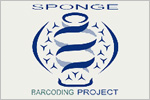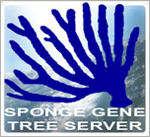Research » Geomicrobiology
Microorganisms inhabit the world for 3.8 Ga, much longer than any multicellular organism. Since their origin, bacteria and archaea had and still have an important influence on the abiotic and biotic environment due to their enormous biomass, their wide variety of physiological capacities and a very fast metabolism. Hence, microorganisms shape the geochemistry of the earth as well as the evolution of multicellular organisms.
Marine sponges harbour a microbial community with an abundance that can make up to almost half of the sponge's biomass. Moreover, the microbial diversity in sponges is unparalleled in any other invertebrate host and this association might be as old as sponges themselves dating back to the Precambrian.
Using the sponge-microbe association as our main study system we investigate microbial community composition (diversity), distribution patterns (biogeography), and the activity and function of those microbes in their habitat by applying a combination of microbiological, molecular and bioinformatics tools.
Microorganisms inhabit the world for 3.8 Ga, much longer than any multicellular organism. Since their origin, bacteria and archaea had and still have an important influence on the abiotic and biotic environment due to their enormous biomass, their wide variety of physiological capacities and a very fast metabolism. Hence, microorganisms shape the geochemistry of the earth as well as the evolution of multicellular organisms.
Marine sponges harbour a microbial community with an abundance that can make up to almost half of the sponge's biomass. Moreover, the microbial diversity in sponges is unparalleled in any other invertebrate host and this association might be as old as sponges themselves dating back to the Precambrian.
Using the sponge-microbe association as our main study system we investigate microbial community composition (diversity), distribution patterns (biogeography), and the activity and function of those microbes in their habitat by applying a combination of microbiological, molecular and bioinformatics tools.
Key publications:
Vargas, S., Leiva, L., Eitel, M., Curdt, F., Rohde, S., Arnold, C., Nickel, M., Schupp, P., Orsi, W.D., Adamska, M., Wörheide, G., 2023. Body-Plan Reorganization in a Sponge Correlates with Microbiome Change. Molecular Biology and Evolution 40 (6), msad138.
Orsi, W.D., Magritsch, T., Vargas, S., Coskun, O.K., Vuillemin, A., Höhna, S., Wörheide, G., D'Hondt, S., Shapiro, B.J., Carini, P., 2021. Genome Evolution in Bacteria Isolated from Million-Year-Old Subseafloor Sediment. MBio e0115021.
Vargas. S., Leiva, L., Wörheide, G. 2020. Short-term exposure to high-temperature water causes a shift in the microbiome of the common aquarium sponge Lendenfeldia chondrodes. Microbial Ecology 81, 213–222.
Pichler, M., Coskun, Ö.K., Ortega‐Arbulú, A.‐S., Conci, N., Wörheide, G., Vargas, S., Orsi, W.D., 2018. A 16S rRNA gene sequencing and analysis protocol for the Illumina MiniSeq platform. MicrobiologyOpen 7 (6), e00611.
Witt, V, P M Ayris, D E Damby, C Cimarelli, U Kueppers, D B Dingwell, and G Wörheide. 2017. Volcanic Ash Supports a Diverse Bacterial Community in a Marine Mesocosm. Geobiology 74 (9): 1905.
Favourite Links
Projects





